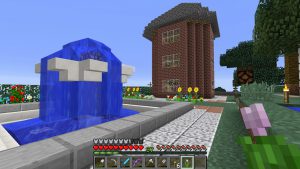Transport Fever
During my ongoing literature review I often discover interesting facts about things I’ve never thought about. Sometimes I can connect these facts with my own observations: The result is mostly a completely new idea why things are as they are. Maybe these ideas are new to you, too. Therefore I’ll share my new science based knowledge with you!
This week: This time, I think about the release of Transport Fever which brought back great memories of playing Transport Tycoon about 20 years ago.
One of the first games I played for a really long time was Transport Tycoon which was developed by Chris Sawyer and got published in 1994 by MicroProse. The game challenged the players to manage a transport company during the time from 1930 to 2030 by setting up efficient transportation lines in order to transport goods from one place to another. For this purpose, players had access to various road vehicles, trains, ships as well as planes and were able to develop a map’s infrastructure by building rail lines, streets, harbors and airports. Furthermore, the historic development of technologies played a central role in the game as new and more efficent vehicles got developed and released as time progressed in the game.
Personally, I was mostly attracted by the game as it allowed me to use different transportational means instead of just focussing on a single technology like trains in Railroad Tycoon. In addition, I found it very interesting to learn more about historic locomotives and airplanes by playing this business simulation.
Unfortunately, aside from the OpenTTD (Open Transport Tyconn Deluxe) project which started 2004, no new business simulation game which provided a similar gameplay experience or improved the game mechanics used in Transport Tycoon got developed since then. OpenTTD is based on the original Transport Tycoon Deluxe and received various improvements throughout its community driven development, but still uses the same 2D isometric graphics.

Transport Fever
On 8. November 2016, about 22 years after the release of the original game, Transport Fever got released. Transport Fever provides a similar gameplay but streamlines important functions such as building infrastructur as well setting up lines, and provides a beautiful 3D environment. Although I have not played the game a lot since it was released, it immediately brought back great memories of playing the old Transport Tycoon.
Finally, the long wait has come to an end!










